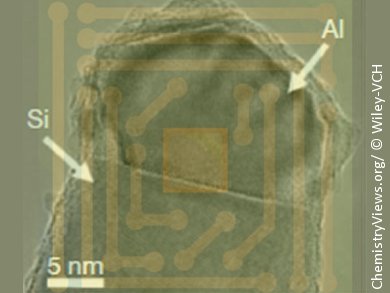The incorporation of impurities in nanowires during their growth alters their properties substantially. In the semiconductor industry this effect is used to enhance conductivity of silicon nanowires by doping them with aluminium. Recently it has been demonstrated that the use of Al as a catalyst during the growth of nanowires results in effective doping of the Si.
Oussama Moutanabbir, École Polytechnique de Montréal, Montréal, Canada, and colleagues used ultraviolet-laser-assisted atom-probe tomography to analyze Al-doped Si nanowires. They were able to compile a three-dimensional atom-by-atom mapping of individual nanowires. The amount of Al atoms found in the nanowires exceeds the equilibrium solid solubility by orders of magnitude. Moreover, the Al impurities are homogeneously distributed within the wire without forming any clusters. The authors discuss that this phenomenon is driven by a kinetic process on atomic scale: During the growth of the nanowire, the Al atoms get trapped in the Si before they reach their chemical equilibrium.
Control of this mechanism is, according to the authors, applicable to other semiconductors, offering the opportunity for new routes to catalytic assembly of nanowires with potentially adjustable properties.
- Colossal injection of catalyst atoms into silicon nanowires
Oussama Moutanabbir, Dieter Isheim, Horst Blumtritt, Stephan Senz, Eckhard Pippel, David N. Seidman,
Nature 2013.
DOI: 10.1038/nature11999




